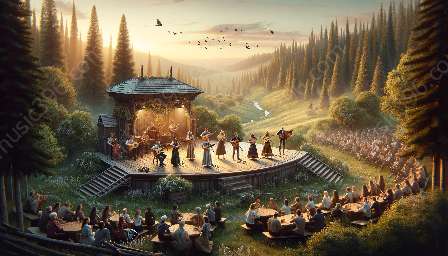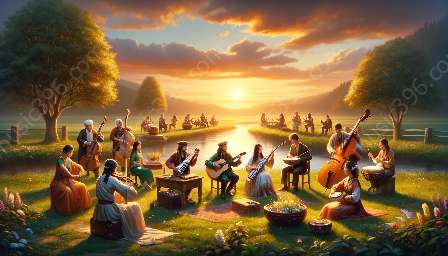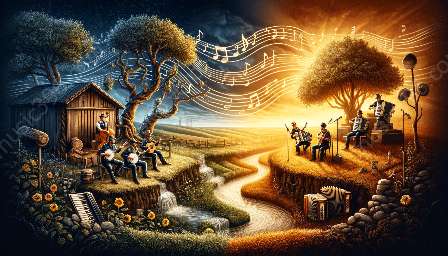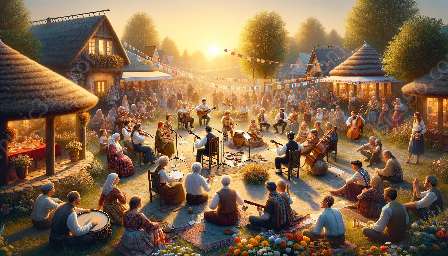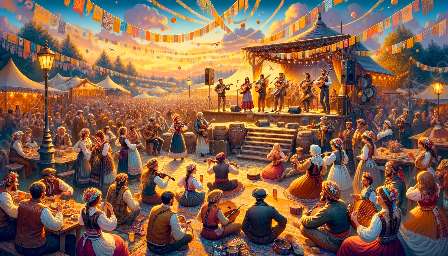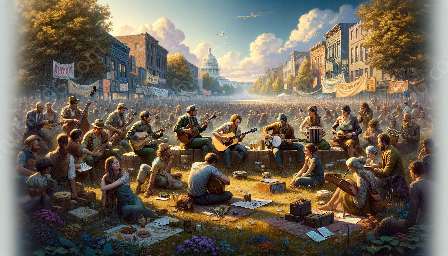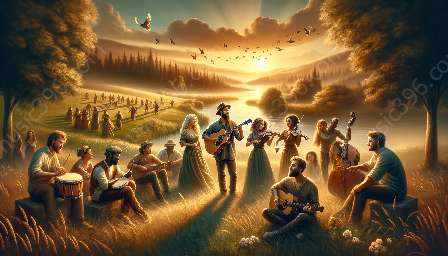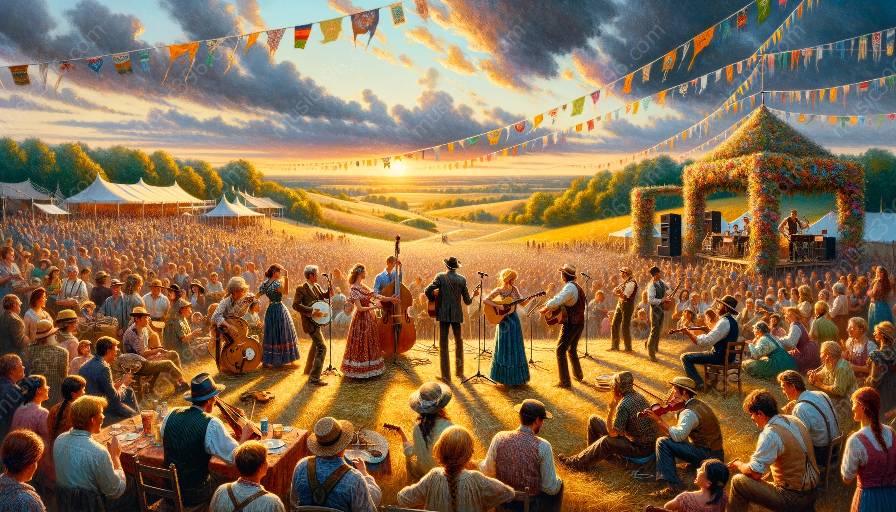Folk music revival movements have played a significant role in preserving and revitalizing traditional music across the world. These movements have not only celebrated the cultural heritage associated with folk music but also influenced the contemporary music scene.
The Roots of Folk Music Revival Movements
Folk music revival movements have their origins in the early 20th century when there was a renewed interest in traditional music and the cultural significance associated with it. These movements sought to revive and preserve the authentic and indigenous forms of folk music that were deeply rooted in local customs, rituals, and community traditions. The revivalists aimed to bring these traditional musical expressions into the mainstream and draw attention to their historical and cultural value.
Impact on Traditional Music
The folk music revival movements have had a profound impact on traditional music by creating a platform for folk musicians and enabling the exchange of knowledge and skills. These movements have led to the documentation and archiving of traditional songs, melodies, and instruments, ensuring that they are not lost to time. By exposing a wider audience to traditional music, the revival movements have helped in safeguarding the legacy of folk music for future generations.
Connection with Contemporary Music
While the primary focus of folk music revival movements is on preserving traditional music, their influence extends to the contemporary music landscape. Many contemporary artists have been inspired by folk music traditions, incorporating elements of folk music into their compositions. This fusion of traditional and contemporary styles has given rise to new and innovative musical genres, enriching the diversity of the music industry.
Regional Revival Movements
Folk music revival movements are not confined to a specific region but have been observed across the globe. Each region has its unique folk music traditions and revival movements tailored to preserve and promote its distinctive musical heritage. Whether it is the Celtic folk music revival in Ireland, the American folk revival during the mid-20th century, or the Nordic folk music resurgence, each movement reflects the cultural identity and historical narrative of the respective region.
Challenges and Future Prospects
Despite the significant contributions of folk music revival movements, they continue to face challenges in the modern era. The globalization of music, changing social dynamics, and technological advancements pose threats to the preservation of traditional music. However, the resilience and dedication of revivalists and cultural enthusiasts offer hope for the future of folk music. With collaborative efforts and educational initiatives, the revival movements can adapt to the evolving musical landscape and ensure the continuity of traditional music for generations to come.
Topic
Regional Variations in Folk Music Revival Movements
View details
Impact on Cultural Representation and Diversity
View details
Contribution of Technology to Spread of Folk Music Revival
View details
Differences between Traditional Folk Music and Revival Era
View details
Contribution to Documentation of Cultural Heritage
View details
Influence on Cultural Exchange and Understanding
View details
Relationship with Contemporary Social Movements
View details
Questions
What are the key characteristics of folk music revival movements?
View details
How did folk music revival movements impact traditional music preservation?
View details
What role did early recording technology play in the folk music revival?
View details
Can folk music revival movements be seen as a form of cultural activism?
View details
How did the folk music revival challenge mainstream music industry norms?
View details
What are the similarities and differences between folk music revival movements in different regions?
View details
What impact did the folk music revival have on the perception of folk musicians as artists?
View details
How did the civil rights movement intersect with the folk music revival?
View details
What are some notable figures in the folk music revival movement and their contributions?
View details
Did the folk music revival influence other genres of music?
View details
What role did festivals play in the folk music revival movements?
View details
How did the folk music revival impact cultural representation and diversity in music?
View details
Where did the folk music revival have the greatest impact?
View details
How did technology, such as radio and television, contribute to the spread of folk music revival?
View details
What is the relationship between folk music revival and environmentalist movements?
View details
What is the legacy of the folk music revival in contemporary music culture?
View details
How did political movements and activism influence folk music revival?
View details
What are the key differences between traditional folk music and the music of the folk music revival era?
View details
What influence did folk music revival movements have on educational programs and curricula?
View details
What impact did the folk music revival have on the commercialization of folk music?
View details
How did the folk music revival contribute to the documentation of cultural heritage?
View details
What is the significance of gender and race in the folk music revival movements?
View details
How did the folk music revival shape music production and distribution?
View details
What international influences can be identified in the folk music revival movements?
View details
How did regional identities play a role in the folk music revival movements?
View details
What are the economic implications of the folk music revival?
View details
What are some criticisms of the folk music revival movements?
View details
What impact did the folk music revival have on oral traditions and storytelling?
View details
What are the connections between folk music revival and cultural identity?
View details
How did the folk music revival influence cultural exchange and cross-cultural understanding?
View details
What role did academia and research play in the development of folk music revival studies?
View details
How did the folk music revival redefine the concept of authenticity in music?
View details
What is the relationship between folk music revival and contemporary social movements?
View details


